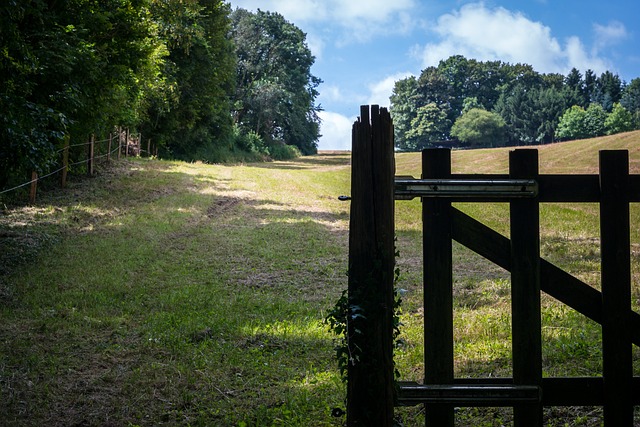Introduction:
Elevate the aesthetic appeal and durability of your wooden fence with professional staining and sealing. This comprehensive guide delves into the art of enhancing outdoor spaces, focusing on the benefits and diverse types of fence staining available. We equip homeowners with essential preparation techniques for optimal results. From step-by-step application processes to sealing strategies aimed at prolonging lifespan, each section contributes to a well-maintained fence. Moreover, we highlight common mistakes to avoid, ensuring your fencing project yields stunning, long-lasting outcomes.
- Understanding Fence Staining: Benefits and Types
- Preparing Your Wooden Fence for Staining
- Step-by-Step Guide to Perfect Stain Application
- Sealing Techniques to Prolong Fence Lifespan
- Common Mistakes to Avoid During Fence Maintenance
Understanding Fence Staining: Benefits and Types
Fence staining is an art and science, offering a multitude of benefits for wooden fences. It’s not just about aesthetics; the right stain can protect your fence from the elements, prolonging its lifespan. Depending on your needs and preferences, various types of fence stains are available. Water-based stains offer a low-maintenance option with a natural look, while oil-based stains provide deeper color and enhanced durability. Each type has unique characteristics, ensuring you find the perfect fit for both style and functionality.
Preparing Your Wooden Fence for Staining
Before applying any stain or sealer to your wooden fence, proper preparation is key. Start by thoroughly cleaning the fence to remove any dirt, dust, and debris that might hinder the staining process. Use a pressure washer or a stiff-bristled brush with a mild detergent to ensure a clean surface. This initial step will help the stain adhere better and create a more even finish.
Once cleaned, inspect your fence for any damaged or rotten sections. Repair or replace these areas as needed to maintain the structural integrity of the fence. Fill in cracks, holes, or missing boards with suitable wood putty or filler, and allow it to dry completely. Sanding the entire fence surface gently can also help smooth out irregularities and ensure an even application of the stain or sealer.
Step-by-Step Guide to Perfect Stain Application
Step-by-Step Guide to Perfect Stain Application
1. Preparation: Begin by cleaning your wooden fence thoroughly, removing any dirt, debris, or existing stain. Use a pressure washer or a brush with mild detergent and water to ensure a clean surface. Let it dry completely before proceeding. Inspect the fence for any damaged or rotten sections and repair as needed to maintain the best results.
2. Stir and Test: Mix the stain according to the manufacturer’s instructions, ensuring all components are well-blended. Conduct a test on a small, hidden area of the fence to determine the desired color and ensure even application. This step is crucial for achieving the perfect shade, especially if you’re aiming for a specific look or matching existing colors.
Sealing Techniques to Prolong Fence Lifespan
Regular sealing is an effective method to protect your wooden fence from the elements, extending its lifespan significantly. There are various sealing techniques available, each offering unique benefits. Water-based sealers are a popular choice due to their low odor and quick drying time, providing a durable barrier against moisture and UV rays. These sealers tend to be easier on the environment and safer for application near plants and pets.
On the other hand, oil-based sealers offer superior stain protection and can last longer, but they emit stronger odors and take longer to dry. They are suitable for areas with high traffic or extreme weather conditions, as they create a thicker barrier that repels stains and water better. Choosing the right sealer depends on factors like climate, exposure, and personal preference, ensuring your wooden fence remains beautiful and long-lasting.
Common Mistakes to Avoid During Fence Maintenance
When it comes to fence maintenance, there are several common mistakes that homeowners often make, which can lead to premature aging and damage to their wooden fences. One of the most frequent errors is neglecting regular cleaning. Over time, dirt, mold, mildew, and other debris can accumulate on the fence’s surface, hindering proper staining and sealing. Regular washing with a mild detergent and a soft-bristled brush will keep your fence clean and ensure better absorption of the stain.
Another mistake to avoid is selecting the wrong type of stain or sealant for your fence’s material and climate. Different woods require specific care, and using an unsuitable product can result in fading, peeling, or cracking. Always opt for a high-quality, weather-resistant stain designed for your fence’s material and consider local climate conditions to choose a durable sealant that protects against moisture, UV rays, and extreme temperatures.
